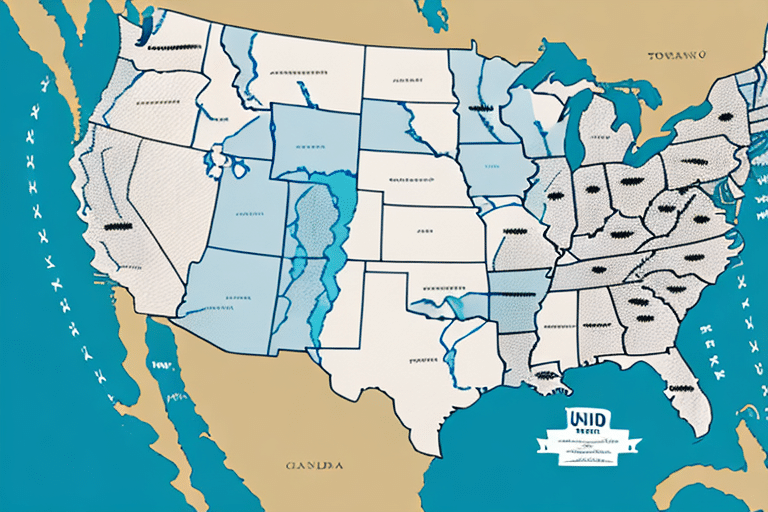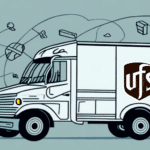Understanding the UPS Contiguous U.S. to Canada Fee
If your business ships goods from the contiguous United States to Canada, you may encounter the UPS Contiguous U.S. to Canada fee. This additional charge applied by UPS can significantly impact your shipping budget. In this article, we delve deep into what this fee entails, why it exists, how it's calculated, and strategies to manage it effectively. By the end, you'll have a comprehensive understanding to make informed decisions about your shipping strategy.
Impact of the UPS Contiguous U.S. to Canada Fee on Your Business
For businesses regularly shipping from the contiguous U.S. to Canada, this fee can increase shipping costs by 30% or more, depending on package size and value. This surge in expenses can challenge your competitiveness in the Canadian market and affect your pricing strategies.
- Increased Shipping Costs: Higher fees can eat into your profit margins.
- Competitive Pricing: Elevated shipping costs may force you to raise prices, potentially deterring customers.
- Budget Allocation: Additional fees require careful budgeting to accommodate increased expenses.
To mitigate these impacts, consider exploring alternative shipping options, consolidating shipments, or adjusting your pricing strategy. Staying updated on UPS fee changes and shipping regulations is also crucial for strategic planning.
Factors Influencing the UPS Contiguous U.S. to Canada Fee
Package Weight and Dimensions
The fee is calculated based on the higher of the package's actual weight or dimensional weight. Larger or heavier packages incur higher fees.
Package Value
The fee is also determined by the value of the goods being shipped. Higher-value items attract higher fees, which are calculated as a percentage of the total value, with a minimum fee of $7.50 and a maximum fee of $415.00.
Destination and Delivery Options
Different destinations within Canada may have varying fee structures. Additionally, expedited shipping options like express delivery can increase the overall fee.
Type of Goods
Shipping hazardous materials or oversized items may require special handling, resulting in extra charges.
Calculating the UPS Contiguous U.S. to Canada Fee
To determine the exact fee for your shipment, use the UPS Online Shipping Calculator. Enter the package weight, dimensions, value, and destination to receive an accurate quote.
Ensure all necessary customs documentation, such as a commercial invoice and any required permits, accompany your shipment to avoid delays or additional fees. UPS provides assistance with customs documentation to streamline this process.
Strategies to Mitigate Shipping Costs
Negotiating with UPS
If your business ships high volumes between the contiguous U.S. and Canada, you may qualify for volume discounts. Contact UPS directly to discuss potential discounts or work with a third-party logistics provider (3PL) to leverage their established relationships for better pricing.
Optimizing Packaging
Reducing the dimensional weight of your packages by optimizing packaging can lower fees. Use appropriately sized packaging materials to minimize excess space.
Consolidating Shipments
Combining multiple packages into a single shipment can reduce the number of fees incurred, leading to significant cost savings.
Leveraging Technology
Utilize shipping software and data analytics to automate processes, track shipments in real-time, and identify the most cost-effective shipping options.
Alternatives to UPS for Shipping Between the Contiguous U.S. and Canada
If UPS fees are prohibitive, consider alternative carriers that may offer more competitive rates or lower fees. Some notable alternatives include:
Each carrier has its own set of delivery times, shipping options, and restrictions. It's advisable to research and compare these alternatives to determine the best fit for your business needs.
Best Practices for Managing International Shipping Costs
- Plan Ahead: Anticipate shipping needs and budget accordingly.
- Optimize Packaging: Use the smallest possible packaging to reduce dimensional weight.
- Negotiate Rates: Engage with carriers to secure the best possible rates.
- Ensure Proper Documentation: Accurate customs forms prevent delays and additional fees.
- Stay Informed: Keep abreast of shipping regulations and fee changes.
Industry Trends and Future Outlook
The international shipping landscape is evolving with the growth of e-commerce, advancements in sustainability, and the integration of new technologies. These trends may influence future changes to the UPS Contiguous U.S. to Canada fee, potentially offering new opportunities for cost optimization and process improvements. Staying informed about these developments will help your business adapt and thrive in the long run.




















